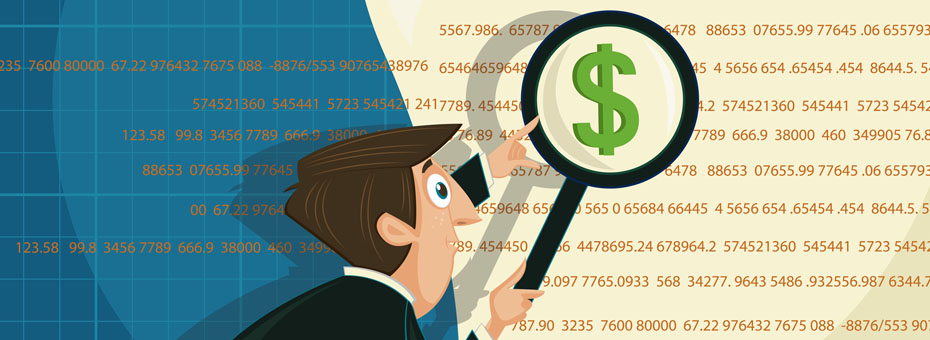Several years ago I (Tracey) wrote an article about the value of finding and eliminating one second of waste from work that shared how I realized idea that: “Understanding that NO waste was too small to combat changed my awareness and daily work forever. I became hyper-aware of my steps, my reaches, my ergonomic position and rework.”
This insight arose out of my doing the work, under the guidance of wise sensei. There are many different levels of engagement and ways of demonstrating our knowledge and learning more about work. You can read a book or Powerpoint, take a course, attend a workshop. The key question is: how can we begin to deepen the awareness of directly translating actions, labor, time, resources, material and information flow, machine, and space into an understanding of waste (and value)—and then analyze the costs involved?
This exercise can be challenging to be sure. Many people are conditioned to “norms” or tribal knowledge about how they work; and they receive constant feedback that it is meeting expectations. Conditioned norms can be an unconscious act, meaning if you look deeply at an action that has gone on for so long without attention, the standards are written with rework in them because it has become a given that this is what we do to make it happen. No one has taken the time to ask the right questions, or invest in the person and their process, much less translate the waste accumulating daily, monthly and yearly. And so built-in waste becomes impossible to spot. And yet a huge amount of cost and waste can be prevented if we learn to see.
In the early stages of my employment at Toyota I was taught a way of thinking that applied in any setting: an ability to read what types of waste are right there staring at us each day, but we aren’t conditioned to see—the types of waste that we tend to fix for the moment, and end up repeating that same flawed process over and over. Let me share a few examples that illustrate what I’m referring to.
“As we grow our people we must continue to add new dimensions of thinking to engage them in their work and to empower them to always be looking for or trying new ideas…Beyond the saving in costs, the growing awareness from developing a sense of line of sight will compound.”
While we (Tracey and Ernie) are sharing real-life examples, for the sake of protecting organizations, we will be sharing the idea and the thinking behind it with a general sense of the cost translation in order to heighten the awareness of what is right under our noses but can sense.
Example 1
A company was investigating paper towel usage in the restroom (although some might ask whether the best approach might be to simply go to a dryer system). They asked “What would be the optimal length of paper towel to dispense in order for the person to just take one to dry their hands?” The company committed to investigating the situation thoroughly before taking any action.
This company noticed an increase of usage and started asking why. They discovered various different standards among the restrooms in different areas. Some dispensed only 4 inches of paper towel, others perhaps around 8 inches; and there were signs of multiple pulls (increase in waste receptacle emptying). Some people were taking two sheets to dry their hands. The next question the company asked was: how much is this costing us when a person pulls more than one, and again what is the optimal amount?
After more study and data collection and talking to folks, the organization determined that 14” of paper towel dispensed was the optimal for 90 percent of the cases, and by only taking one to dry your hands, the annual cost savings in paper towel usage would be more than $15,000. Think about how putting a tangible cost to something like this changes how we see it and as a result how we are much more aware of this. Even outside of work: no matter where we go now we try our best to use only one paper towel if that is the chosen method for drying hands. Awareness is key. It can start as simple as this.
Example 2
A company decided to look at electricity costs, not only in what it was creating for the customer, but the usage of light across all their areas as well. They started a trial in one office area, temporarily disabling 25 percent of the fluorescent lighting, to test the optimal lighting needed to do its work without over-processing “light” (i.e using unnecessary amounts). The studies revealed that not only could they capture significant savings by reducing their lighting, but that people felt better and worked more pleasantly as a result. After confirming that the new standard wasn’t hindering any process, yokoten was used across office areas for the entire company, resulting in an annualized electric savings of more than $50,000. Moreover, the process prompted people to come up with similar ideas in other places where lighting could be right-sized (such as shutting down lighting 50 percent in non-production times), resulting in another annual savings of more than $50,000.
Example 3
A company that considered scrap to be so miniscule that they resisted even talking about it finally agreed to examine the issue with us. Let’s say they made sticky labels to put on products to identify all the information needed. The average size of these labels was approximately 4” by 5-6” in height, and there were variations. We observed that the process owners were scraping out several of these labels per run of a specific product. This seemed to be a common, conditioned response. We asked the process owner approximately how many sticky labels were scrapped daily, and we asked the label maker approximately how much per label. We were told 5-10 cents per label depending upon the exact size. We started an annualized cost translation based on how many were scrapped on average per line/run. We gathered deeper information from others, and we learned that those little nickel and dimes annualized to over $150,000 per year.
When we shared these findings, the room was quiet for a few seconds, followed by a “wow”. Putting a tangible translation to the cost of this waste was a dramatic way to highlight not just how much could be saved—but also the value of becoming aware of waste in the work.
These examples are very small “base hits” we see at a glance, and yet most people may overlook as operational expenses or accepted norms. We love to start small to develop the awareness of how much the little things impact us; we find it priceless when this shared wisdom grows and develops in people.
As we grow our people we must continue to add new dimensions of thinking to engage them in their work and to empower them to always be looking for or trying new ideas. While classes or other forms of training are useful, there’s no replacement for learning from the work, and bringing KPI connections/contributions to what we are learning and trying—and adding the connection from that KPI (Quality, Safety, Productivity, Cost, and HR training and development) to our strategy deployment cascade vertically and horizontally. Beyond the saving in costs, the growing awareness from developing a sense of line of sight will compound.
We must invest in ALL people, no matter what their role is in the organization, by giving them “Space to Think”, in which they may see through a different lens. Doing so gives them the ability to translate and differentiate the non-value add to the value-add.







